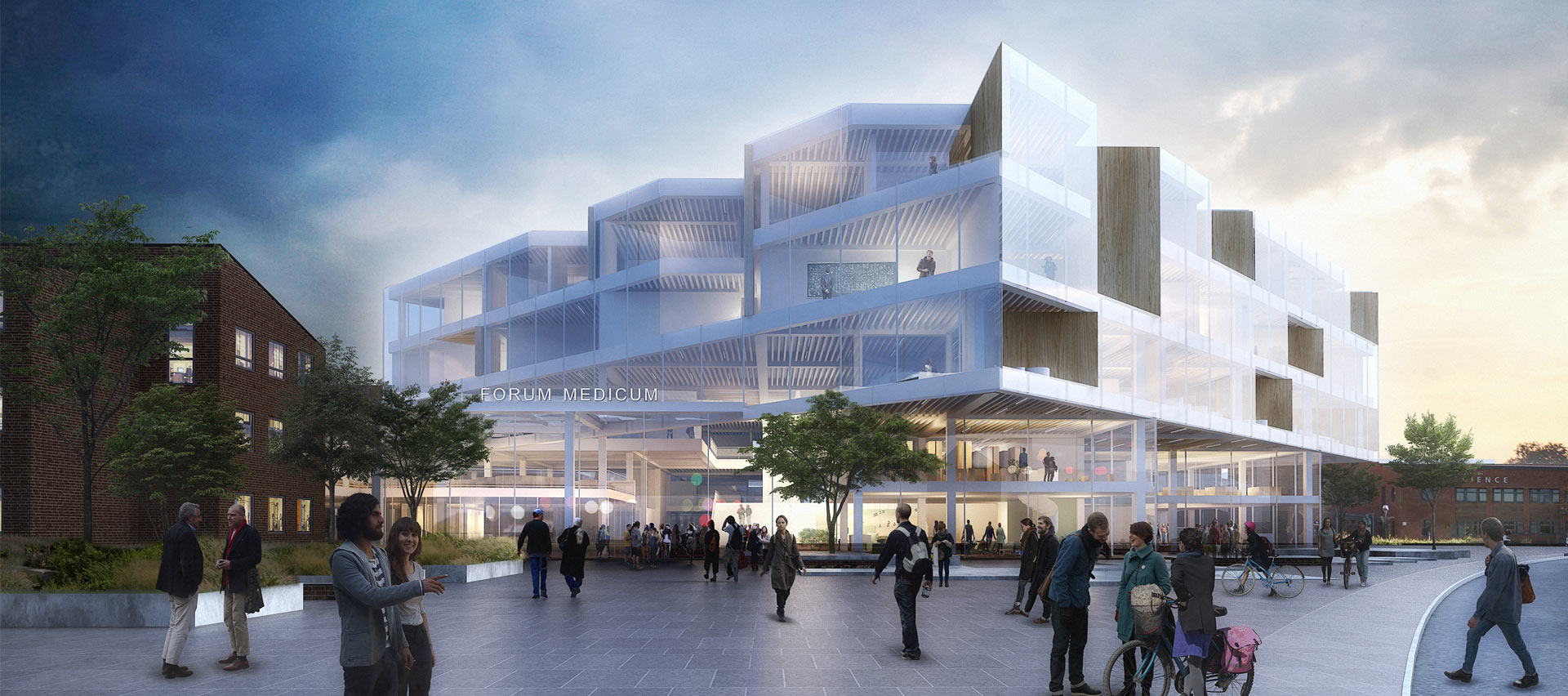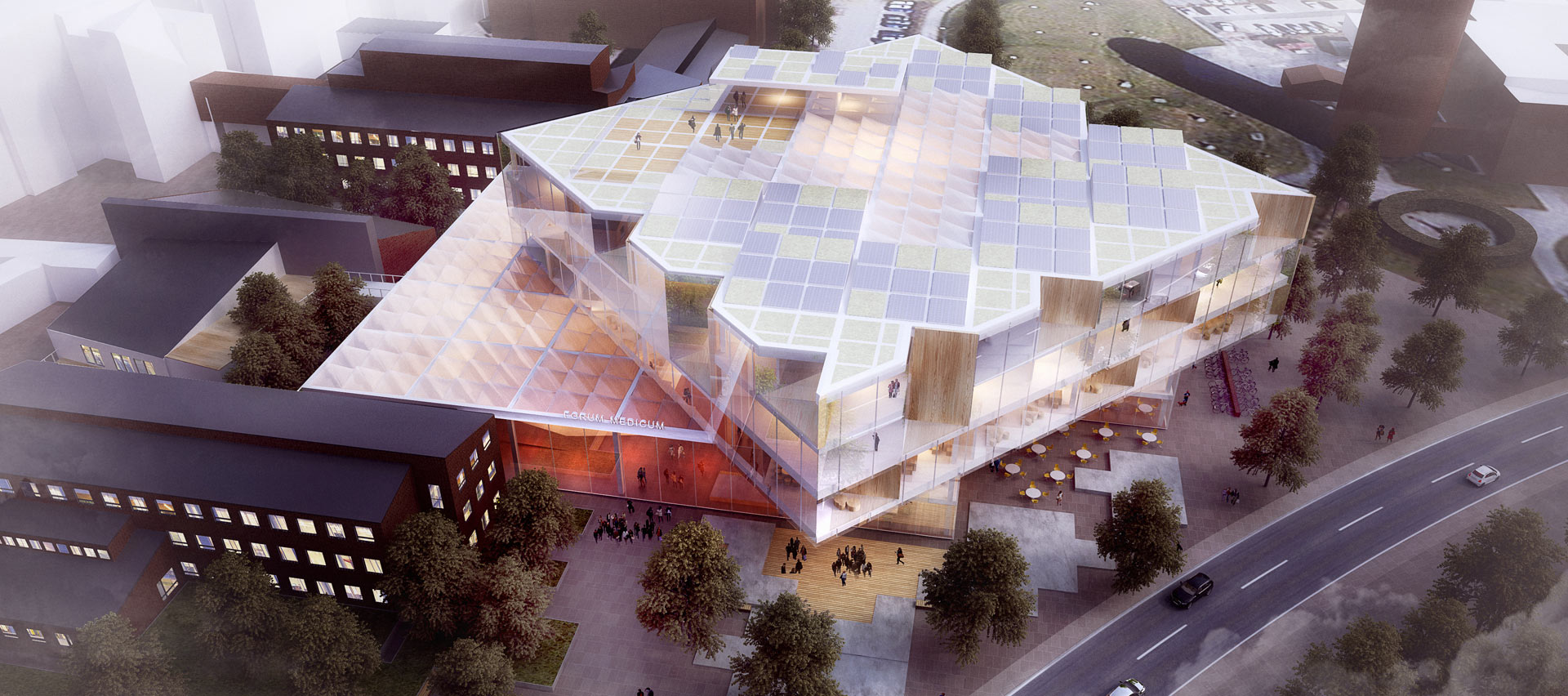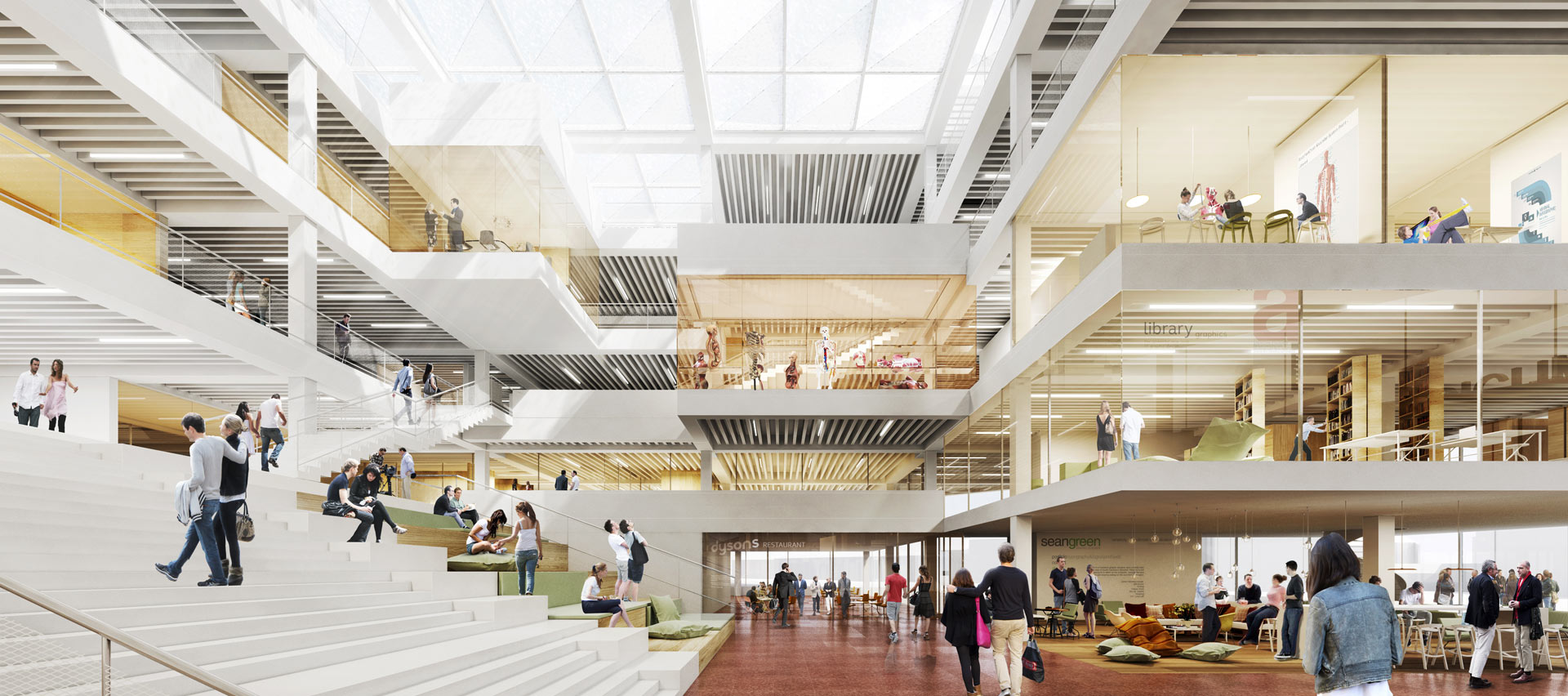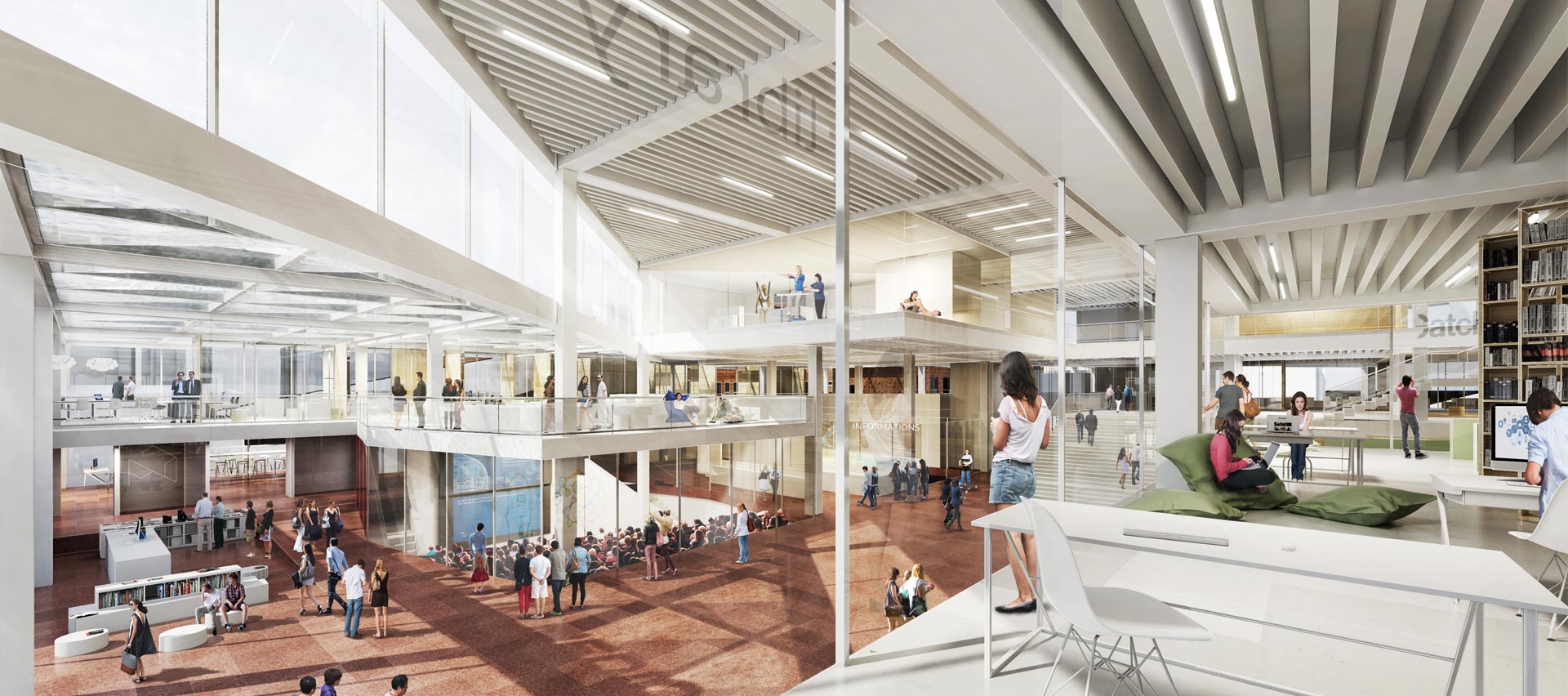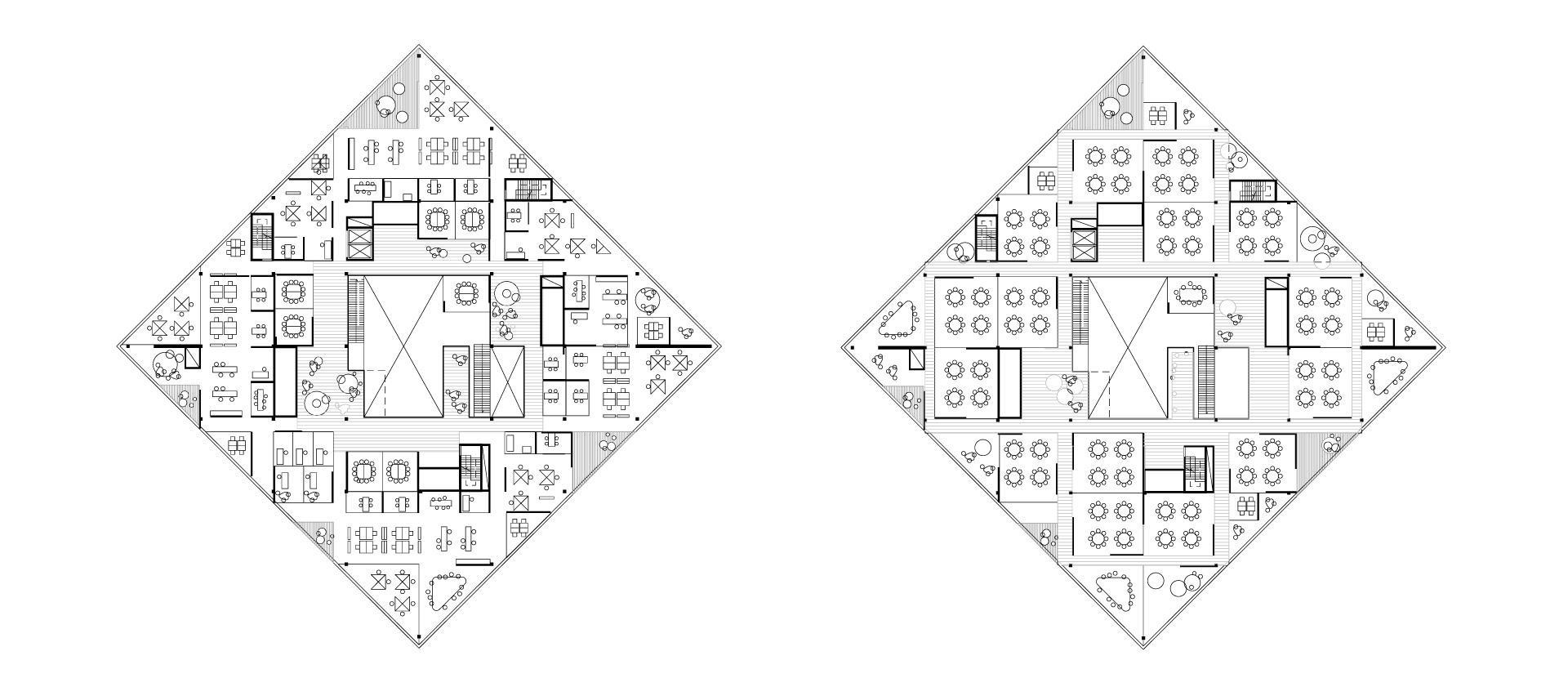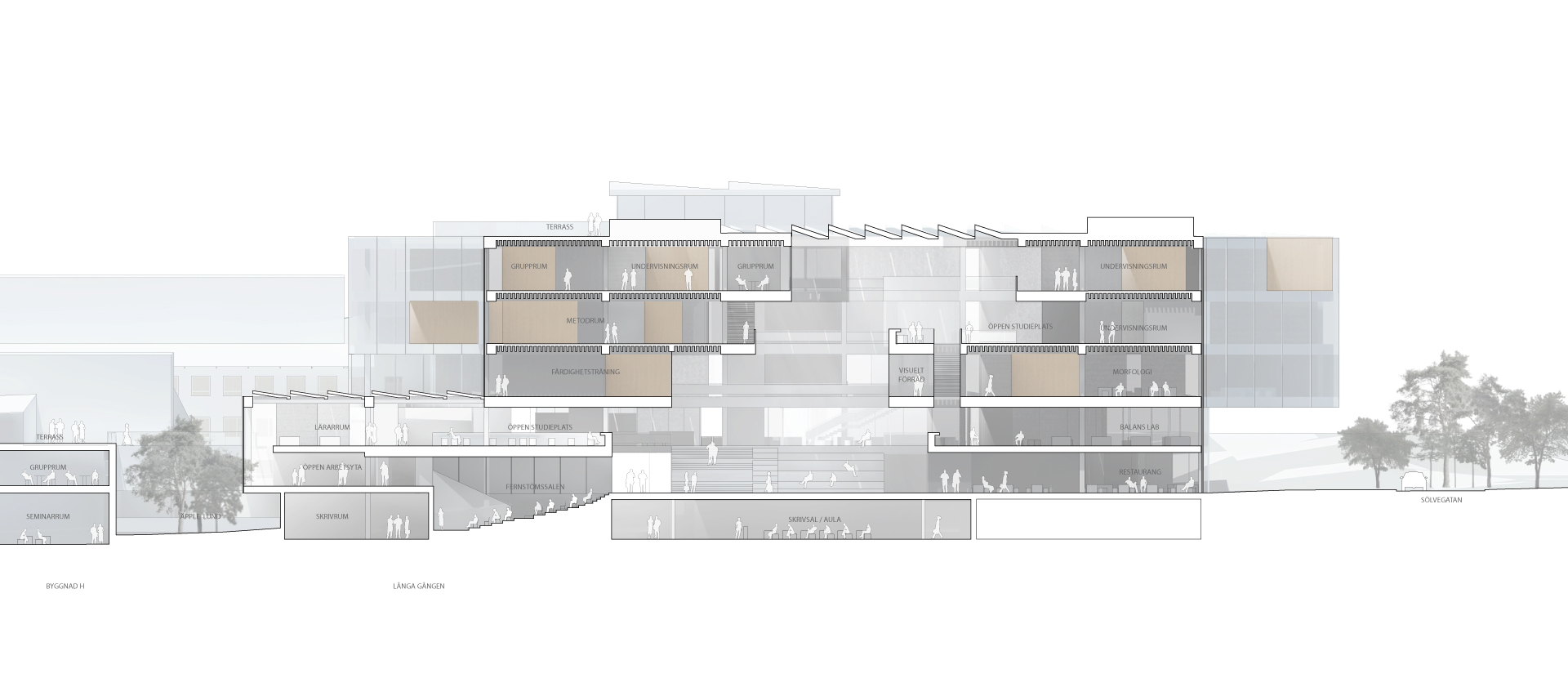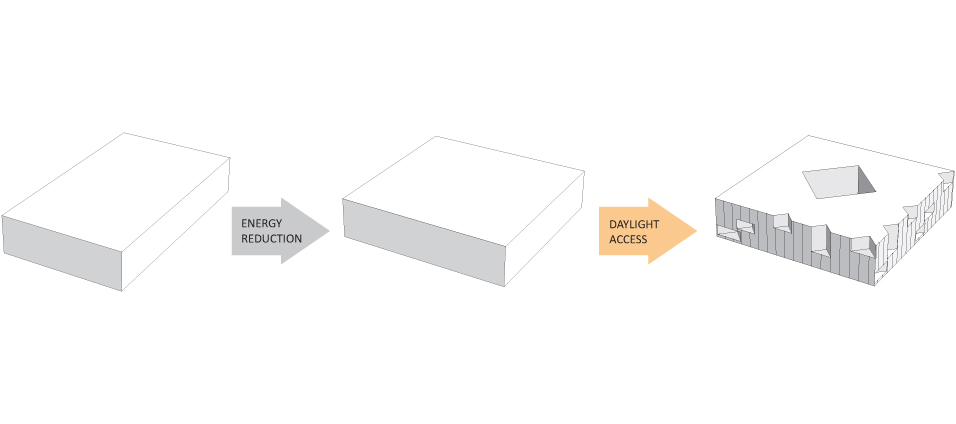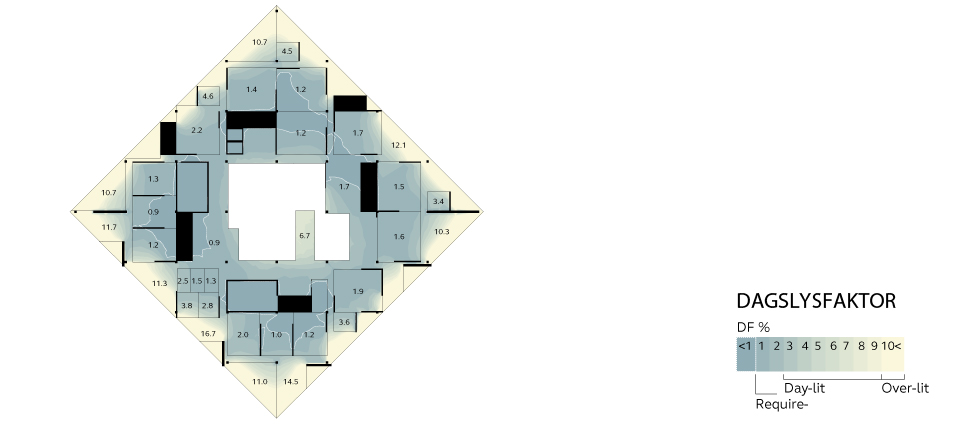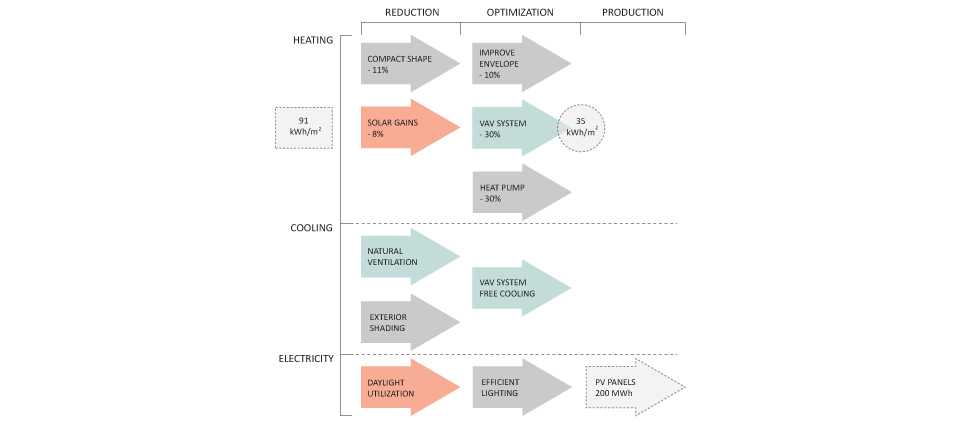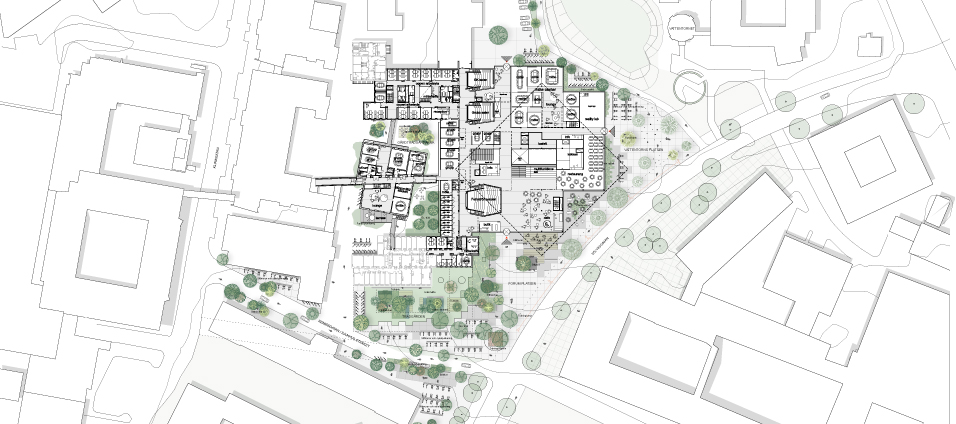1464-HEN-SE-2015
Client: Akademiska Hus
Status: Competition (2015)
Location: Lund, Sweden
Coordinates: 55.7119513, 13.2013043
Climate: Continental, Temperate
Material: Glass
Environment: Urban
Visualizer: Studio
Scale: 25.000 ㎡ Large
Types: Education, University
With the open and transparent base as a link between the existing faculty buildings, Forum Medicum will become the new gathering place for employees, students, researchers and visitors at the Medical faculty of Lund University. The architecture creates a unique new forum that unites the university with the city.
Forum Medicum will be the new rallying point for all students, programmatically bundling the various educational areas and fields of research in one new medical research center for the Faculty of Medicine at Lund University. The central location on Sölvegatan and the ambitious agenda for the buildings will be a generator for the development of the university and the plans for the Campus.
The indoor plaza, the Forum, will be accessible to the public, with café, restaurant and meeting points all visually linked to the outdoor public areas. The blurred border between indoor and outdoor areas effectively creates one great urban forum, making room for exhibitions and an informal learning environment, while conveying the functions of Forum Medicum to the city and people around it.
The building on top of the Forum is rotated 45 degrees, in a gesture that strengthens the identity and expression of the building, connecting it to the context around Sölvegatan. The diagonal rotation of the bottom and top building utilizes the area optimally and provides unique recreational spaces in and outside the building in niches and terraces.
Flexibility has been essential in the design of the new building. The space planning strategy has been to weigh the different needs of an environment for teaching, research and study purposes. The design consists of a simple modular system that can be modified from day to day, with the use of sliding doors and other divisions. This flexibility also makes it possible to change the layout of the building more drastically in the long run, meeting the requirements of the changing needs for research facilities and approaches to teaching.
Durable and natural materials are utilized throughout the building. Symbolizing the different forms and functions of the Medical Faculty, warm and cool materials are applied variously throughout the complex. Steel and wood are recurrent materials, creating an atmosphere of the building that juxtaposes clinical precision and natural warmth – professionalism combined with humanism. The façade and roof of the lower building are a combination of steel and wood, filtering daylight into the Forum and providing a feeling of being outside under trees.
Considerations for social, environmental and economic sustainability have informed the building design. A comfortable and healthy indoor climate, energy efficient solutions and sustainable long-lasting materials have been guiding principles throughout the process.
Shape and Structure as Sustainable Strategies
In the overall design of the building a great focus has been on the reduction of energy use and enhancing the indoor environment. The building must comply with the the Swedish building code for «climate zone IV» and the «Miljöbyggnad Silver» requirements. Miljöbyggnad requires a 25% reduction in bought energy compared to the Swedish building code. Further, educational buildings require a great focus on the indoor environment such as the amount of daylight and thermal comfort.
Reduce, optimize, and produce
The strict demands for reduced energy consumption have been met through implemented strategies that will significantly reduce the building’s energy demands. These strategies can be divided into three aspects; A reduction of the energy demands, an optimization of the systems in the building and a production of energy.
The reduction of the energy demands are implemented completely in the buildings passive properties, the shape, structure and façade of the building. The compact shape of the building minimizes heat loss, while an atrium ensures daylight access even deep in the building, minimizing the need for heating and lighting. The façade and the atrium provides free cooling and fresh air, while saving energy. The exterior adaptable shading system further reduces the cooling demands during sunny summer days without reducing the intake of daylight.
To further lower the need for energy the buildings passive properties have been optimized. Insolating the envelope, reduces the heating and cooling loads. As a supplement to daylight, low energy lamps (LED) is implemented throughout the building. The ventilation is conducted via a low pressure variable air volume (VAV) system that measures the CO2 levels and temperature of the buildings and adjusts the air flow after the specific needs. The VAV also covers both heating and cooling demands.
As a final measure to reduce the amount of bought energy is the integration of photovoltaic panels on the roof that produce electricity. The panels cover an area of 1350m2 and are placed on south oriented sloped parts of the roof the maximize the production of energy – up to 200MWH annually, enough to cover part of the building’s electric load and provide green energy to the electricity grid.
Designing with Daylight
The design of the building ensures that the indoor environment lives up to the needs of an educational facility with various functions. The areas closest to the façade, with high solar exposure are multipurpose, flexible spaces that can be used for studying, meeting, leisure activities etc during the day. These spaces can have a more flexible indoor environment.
The classes that need to have a more stable, controlled indoor environment are placed distantly from the façade. This way they avoid direct sunlight exposure but they still maintain high levels of Daylight Autonomy (more than 50%) and a moderate Daylight Factor of 1 to 2%.
The inner spaces of the building, around the atrium, mainly consist of circulation areas and auxiliary spaces with low daylight and indoor environment requirements.
Connecting to the Context
The area around the Forum Medicum unites the new building with the context, both literally and visually.
The Forum Square in front of the building towards Sölvegatan is kept open and welcoming, creating a gathering point between faculty and town, users and visitors. The functions of the Forum Medicum, such as the café, the restaurant, the exhibitions as well as research and teaching can be moved out onto the plaza.
The more intimate courtyards are kept green and offer recreational spaces for the users of the building as well as a training station, which can be used after hours as well as part of the research or teaching.
The materials are kept natural and light. The pavement is light sienna colored concrete tiles in varying shapes and sizes, depending on the space. Wood has been integrated in furniture and in borderzones.
Plants and trees are kept freestanding and with light treetops, relating to both the scale of the building and the scale of the people. The vegetation is continued towards the hospital and will help link the new Forum Medicum with the context.
